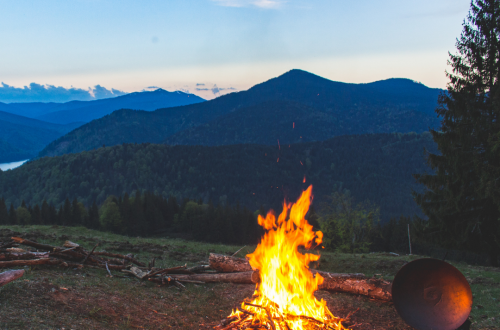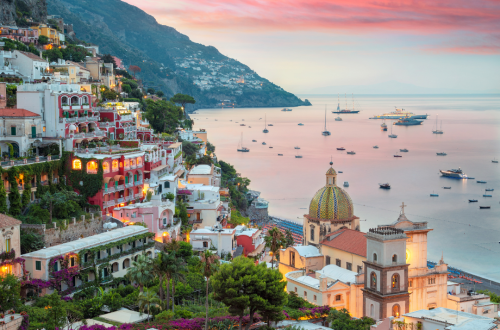
Where Are the Best Places to Hike in The World?
When most people think of hiking, they think of a nice, peaceful walk in the woods, carrying a backpack of snacks and water, occasionally stopping to gaze out at the picturesque scene. Well, that’s if you’ve ever been hiking, that is. If you have and you’ve been doing it for a while, you know that hiking involves a lot more than just walking because your hiking gear has to be able to comfortably endure the elements. Not to mention the weight of your backpack, which will increase as you add food, water, and clothing.
Pennine Way, United Kingdom
The Pennine Way is the longest and most iconic of all long-distance trails in the United Kingdom. The Pennine Way starts in St. Bees, Cumbria, in Northern England and travels north to Kirby Lonsdale, in North Yorkshire. Along the way, it passes by a host of well-known landmarks such as Hawes, Sedbergh, and Kirkby Stephen. The Pennine Way officially begins at St. Bees, but many people start their treks from the city of Carlisle, in Cumbria, at the river Eden.
Camino de Santiago de Compostela, Spain
Pilgrims visit The Camino De Santiago (The Way of St. James) in the Cathedral in Santiago de Compostela, Spain. It is believed to be the oldest and longest pilgrimage in Europe, as it was founded in AD 993. The Cathedral, which houses the bones of St. James the Apostle, is the destination of almost all Camino De Santiago treks. Originally, the Camino de Santiago was a for many Christians a route to travel from southern France to Santiago, but it was also a popular way for pilgrims to visit the Holy Land, as well. Pilgrims would often walk the Camino or ride their horse or donkey to their destination.
Appalachian Trail, United States
The Appalachian Trail is one of the world’s oldest long-distance hiking trails. Stretching some 2,200 miles from Georgia to Maine, the trail passes through fourteen states along the way and connects several different mountain ranges. More than 2 million people have hiked the Appalachian Trail, and that number continues to rise each year.
However, hiking the Appalachian Trail isn’t as easy as it sounds. Many hikers give up in difficulty, and only about 10 percent complete the entire 2,200-mile trail.
The Basho Wayfarer, Japan
The Basho Wayfarer, also known as the Kinkaku-Ji, is a Zen temple located in Hikone, Niigata, Japan. The temple was built for the Buddhist monk, poet, and artist, Kobo Daishi (1173-1262). The Wayfarer was moved from the original location in 1595 to the current structure, which is designated as a national treasure. The architecture is centered around three courtyards, commonly referred to as the “water garden,” “sand garden,” and “snow garden.” Each courtyard has a unique theme, and the gardens are enhanced by the use of beautiful water features, statues, lanterns, and stone bridges that connect the courtyards together.
Refugio Frey and Cerro Catedral, Argentina
Patagonia isn’t just about mountains. Patagonia is also home to lakes, rivers, plains, and forests that soothe the soul. Add in the breathtaking vistas and the multitude of wildlife that lives in the region, and it’s no wonder Patagonia is attracting visitors from around the world. While Patagonia is vast, we’ve decided to focus on two attractions: Refugio Frey and Cerro Catedral. While both are famous landmarks, they are very different, and both offer visitors unique experiences.
Mount Toubkal, Morocco
For many years, Mount Toubkal has been the Holy Grail of trekking, climbing, and mountaineering. After several failed attempts, the first successful ascent came in 1956, but it wasn’t until 1978 that the mountain was officially named after its Moroccan location. Some had criticized climbers for attempting to reach the summit in 1978 when several deaths had already occurred in the attempt. Yet, there has been an ongoing debate as to whether or not the deaths prevented future attempts since these deaths could have been prevented with better preparation.
Great Wall of China, Jinshanling section
Jinshanling Great Wall is the only remaining section of the Great Wall of China. When it was built 500 years ago, the Jinshanling was the tallest and most magnificent section of the wall. Although most of the wall has been rebuilt over the years, Jinshanling does not suffer the structural damage that most other sections have. Tourists can walk the same stretch of wall as emperors and emperors did 500 years ago.
Altitude isn’t the only thing that can make a hike a challenge. Weather, change in surface conditions, and uneven ground can all put a damper on your trip. But a well-designed trail and careful preparation can help you make the most of every challenge.





